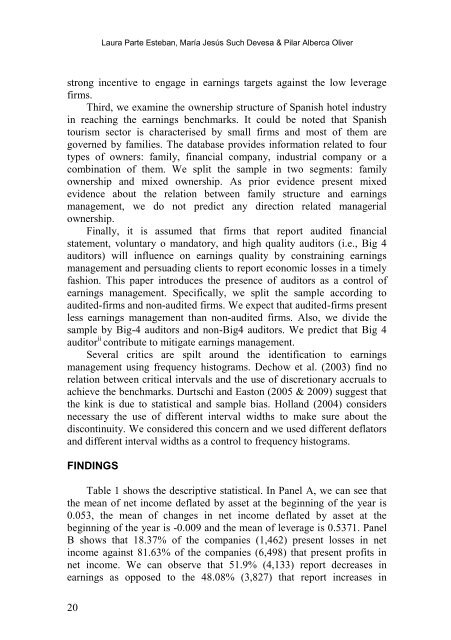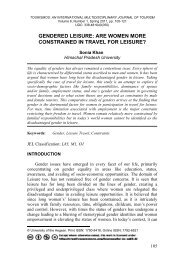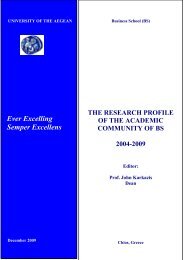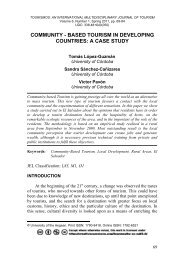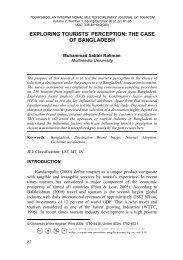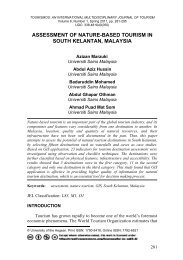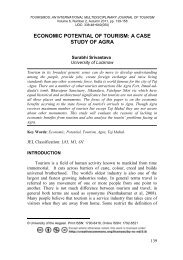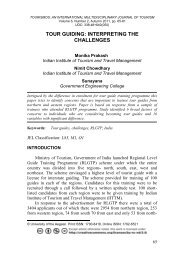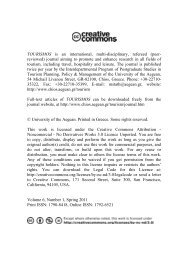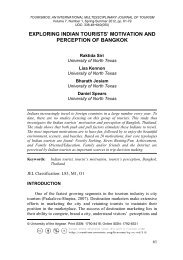COMMONS DEED
COMMONS DEED
COMMONS DEED
You also want an ePaper? Increase the reach of your titles
YUMPU automatically turns print PDFs into web optimized ePapers that Google loves.
Laura Parte Esteban, María Jesús Such Devesa & Pilar Alberca Oliver<br />
strong incentive to engage in earnings targets against the low leverage<br />
firms.<br />
Third, we examine the ownership structure of Spanish hotel industry<br />
in reaching the earnings benchmarks. It could be noted that Spanish<br />
tourism sector is characterised by small firms and most of them are<br />
governed by families. The database provides information related to four<br />
types of owners: family, financial company, industrial company or a<br />
combination of them. We split the sample in two segments: family<br />
ownership and mixed ownership. As prior evidence present mixed<br />
evidence about the relation between family structure and earnings<br />
management, we do not predict any direction related managerial<br />
ownership.<br />
Finally, it is assumed that firms that report audited financial<br />
statement, voluntary o mandatory, and high quality auditors (i.e., Big 4<br />
auditors) will influence on earnings quality by constraining earnings<br />
management and persuading clients to report economic losses in a timely<br />
fashion. This paper introduces the presence of auditors as a control of<br />
earnings management. Specifically, we split the sample according to<br />
audited-firms and non-audited firms. We expect that audited-firms present<br />
less earnings management than non-audited firms. Also, we divide the<br />
sample by Big-4 auditors and non-Big4 auditors. We predict that Big 4<br />
auditor ii contribute to mitigate earnings management.<br />
Several critics are spilt around the identification to earnings<br />
management using frequency histograms. Dechow et al. (2003) find no<br />
relation between critical intervals and the use of discretionary accruals to<br />
achieve the benchmarks. Durtschi and Easton (2005 & 2009) suggest that<br />
the kink is due to statistical and sample bias. Holland (2004) considers<br />
necessary the use of different interval widths to make sure about the<br />
discontinuity. We considered this concern and we used different deflators<br />
and different interval widths as a control to frequency histograms.<br />
FINDINGS<br />
Table 1 shows the descriptive statistical. In Panel A, we can see that<br />
the mean of net income deflated by asset at the beginning of the year is<br />
0.053, the mean of changes in net income deflated by asset at the<br />
beginning of the year is -0.009 and the mean of leverage is 0.5371. Panel<br />
B shows that 18.37% of the companies (1,462) present losses in net<br />
income against 81.63% of the companies (6,498) that present profits in<br />
net income. We can observe that 51.9% (4,133) report decreases in<br />
earnings as opposed to the 48.08% (3,827) that report increases in<br />
20


